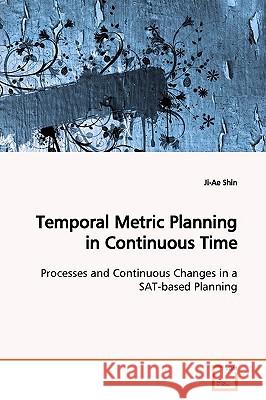Temporal Metric Planning in Continuous Time » książka
Temporal Metric Planning in Continuous Time
ISBN-13: 9783639164541 / Angielski / Miękka / 2009 / 168 str.
The TM-LPSAT planner can construct plans in domains containing atomic actions and durative actions; events and processes; discrete, real-valued, and interval-valued fluents; reusable resources, both numeric and interval-valued; and continuous linear change to quantities. It works in three tages. In the first stage, a representation of the domain and problem in an extended version of PDDL+ is compiled into a system of Boolean combinations of propositional atoms and linear constraints over numeric variables. In the second stage, a SAT-based arithmetic constraint solver, such as LPSAT or MathSAT, is used to find a solution to the system of constraints. In the third stage, a correct plan is extracted from this solution. We discuss the structure of the planner and show how planning with time and metric quantities is compiled into a system of constraints.
The TM-LPSAT planner can construct plans in domains containing atomic actions and durative actions; events and processes; discrete, real-valued, and interval-valued fluents; reusable resources,both numeric and interval-valued; and continuous linear change to quantities. It works in three tages.In the first stage, a representation of the domain and problem in an extended version of PDDL+ iscompiled into a system of Boolean combinations of propositional atoms and linear constraints overnumeric variables. In the second stage, a SAT-based arithmetic constraint solver, such as LPSAT orMathSAT, is used to find a solution to the system of constraints. In the third stage, a correct plan isextracted from this solution. We discuss the structure of the planner and show how planning withtime and metric quantities is compiled into a system of constraints.











